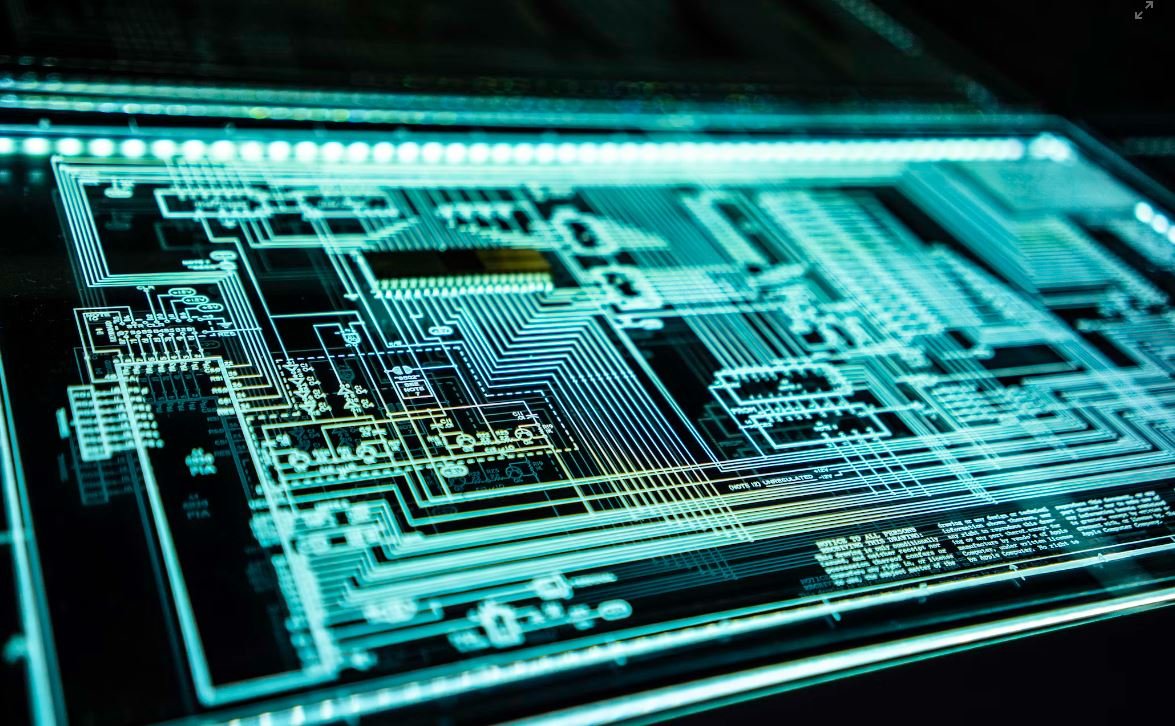Artificial Intelligence in Food Production
Artificial Intelligence (AI) is revolutionizing various industries, and the food production sector is no exception. AI technologies are being implemented to enhance efficiency, improve quality control, and optimize production processes. These advancements have significant implications for both food manufacturers and consumers alike.
Key Takeaways:
- AI is reshaping the food production sector, improving efficiency and quality control.
- Machine learning algorithms enable predictive analytics, optimizing production processes.
- AI-powered robots and drones can reduce labor costs and increase productivity.
- AI applications include food safety monitoring, precision farming, and personalized nutrition.
Enhancing Efficiency and Quality Control
One of the key benefits of AI in food production is its ability to enhance efficiency and improve quality control throughout the supply chain. With the help of machine learning algorithms, **manufacturers can analyze vast amounts of data** in real-time, allowing for **precise decision-making and identification of potential quality issues**. These technologies enable companies to streamline operations and reduce waste, leading to cost savings and increased productivity. *This intelligent data analysis can help prevent incidents of contamination and ensure only safe and high-quality products reach consumers.*
Additionally, AI-powered robots and automated systems can be utilized for various tasks within the production process. These robots can perform repetitive and physically demanding tasks with precision and accuracy, thus reducing the risk of human error. *Automated systems can work around the clock, accelerating production and minimizing downtime.*
Predictive Analytics and Optimization
Machine learning algorithms enable predictive analytics in food production, allowing companies to optimize their production processes. By analyzing historical data, **AI systems can predict supply and demand patterns**, enabling manufacturers to adjust production levels accordingly. *This predictive capability reduces the risk of overproduction or shortages, leading to better inventory management and cost savings.*
Additive manufacturing, also known as 3D printing, is another area where AI is making significant strides. By combining AI with 3D printing technology, **companies can create customized food products** with unique shapes, textures, and tastes. This innovation opens up new possibilities for personalization in the food industry.
Applications in Food Safety and Agriculture
AI is being applied in food safety monitoring, enabling real-time detection of contaminants and pathogens. **Sensors and cameras equipped with AI algorithms** can identify potential issues in the production line, ensuring prompt corrective actions. This technology helps prevent foodborne illnesses and improves overall consumer safety.
| Application | Benefits |
|---|---|
| Food Safety Monitoring | – Real-time detection of contaminants – Prompt corrective actions to prevent foodborne illnesses |
| Precision Farming | – Optimal use of resources – Increased crop yields – Reduced environmental impact |
| Personalized Nutrition | – Tailored dietary recommendations – Improved health outcomes |
In the field of agriculture, AI technologies are being utilized for precision farming. Through the use of **drones and satellite imagery**, farmers can gain valuable insights into crop health, pest infestations, and irrigation needs. This data-driven approach to agriculture allows for the optimal use of resources, resulting in increased crop yields and reduced environmental impact.
Conclusion
Artificial Intelligence has become a game-changer in the food production industry, providing significant improvements in efficiency, quality control, and overall safety. From predictive analytics and optimized production processes to food safety monitoring and personalized nutrition, AI technologies offer a wide range of applications for food manufacturers. Embracing these advancements will ensure the industry continues to evolve and meet the demands of a rapidly changing world.

Common Misconceptions
Misconception: Artificial Intelligence in Food Production means robots replacing humans
One common misconception about Artificial Intelligence in Food Production is that it involves replacing humans with robots. However, this is not entirely true. AI in food production is designed to complement human efforts and make processes more efficient, rather than replacing human workers entirely.
- AI is used to automate repetitive and time-consuming tasks, allowing human workers to focus on more complex and creative aspects of food production.
- AI-powered machines can handle repetitive tasks more efficiently and precisely, reducing the chances of errors and increasing productivity.
- Human intervention is still required to ensure the quality control of food products and maintain safety standards.
Misconception: Artificial Intelligence in Food Production is only for large-scale production
Another common misconception is that AI in food production is only applicable to large-scale production facilities. However, AI can be implemented at various scales, including small and medium-sized operations.
- AI technologies can be customized to fit the specific needs and budgets of different-sized operations.
- Small-scale producers can benefit from AI in areas such as inventory management, predictive maintenance, and quality control.
- Adopting AI in food production can ultimately help smaller businesses compete with larger players in the industry.
Misconception: Artificial Intelligence is a threat to jobs in the food industry
There is a common fear that AI in food production will lead to job losses in the industry. While AI does automate certain tasks, it also creates new job opportunities and enhances the roles of existing workers.
- AI requires human expertise to develop, maintain, and oversee its implementation.
- New job roles are emerging in AI, such as AI technicians, data analysts, and AI system trainers.
- Workers can upskill and reskill to adapt to new roles and work alongside AI systems.
Misconception: Artificial Intelligence is only useful for efficiency, not for quality
Many people assume that AI in food production is only beneficial for improving efficiency and reducing costs. However, AI also plays a crucial role in enhancing the quality of food products through various applications.
- AI can analyze and predict variations in raw materials, helping to maintain consistent quality standards.
- Through computer vision technology, AI can identify defects or anomalies in food products during the production process, ensuring a higher level of quality control.
- AI can support traceability efforts, enabling faster recalls and reducing the risk of foodborne illnesses.
Misconception: Artificial Intelligence in Food Production is overly complex and expensive
Some believe that implementing AI technologies in food production is too complex and costly for most businesses. However, the reality is that AI technologies are becoming more accessible and affordable for a wide range of food producers.
- AI tools and software are becoming user-friendly and easier to integrate with existing systems.
- Cloud-based AI platforms allow businesses to access AI capabilities without significant infrastructure investments.
- Various AI solutions are available at different price points, making it feasible for businesses with varying budgets.

Robotic Harvesting Techniques
Advancements in artificial intelligence have revolutionized the food production industry, leading to the development of automated systems for harvesting crops. The table below highlights the various techniques employed in robotic harvesting:
| Technique | Description | Benefits |
|---|---|---|
| Computer Vision | Robots equipped with cameras locate and identify ripe fruits or vegetables. | Reduces human labor, increases efficiency, maximizes yield. |
| Machine Learning | Robots learn to recognize and handle delicate produce based on training data. | Improves accuracy, minimizes crop damage, optimizes resource allocation. |
| Smart Grippers | Robotic arms equipped with specialized grippers carefully pluck fruits from branches. | Preserves fruit quality, reduces bruising, minimizes waste. |
| GPS Tracking | Robots navigate fields using GPS coordinates to locate specific crops. | Increases precision, minimizes errors, enables efficient harvesting. |
AI-Driven Quality Assurance
In the food production industry, maintaining high-quality standards is crucial. AI-powered quality assurance systems have significantly improved the process, as depicted in the following table:
| System | Description | Benefits |
|---|---|---|
| Computer Vision Inspection | Cameras capture images of produce, identifying defects or foreign particles. | Enhances product safety, reduces waste, ensures customer satisfaction. |
| Sensor-Based Monitoring | Sensors detect physical parameters like temperature, humidity, and pH levels. | Predicts spoilage, improves product consistency, enables real-time monitoring. |
| Automated Sorting | Robotic systems sort products based on predetermined quality criteria. | Increases efficiency, reduces human error, ensures uniformity. |
| Machine Learning Algorithms | Algorithms analyze data to predict quality deviations and suggest corrective actions. | Improves traceability, prevents recalls, optimizes production processes. |
AI-Enabled Crop Disease Detection
Timely detection of crop diseases is essential to mitigate their spread and prevent large-scale yield losses. The table below showcases various AI techniques employed in crop disease detection:
| Technique | Description | Benefits |
|---|---|---|
| Image Classification | AI models analyze images of crops to identify disease symptoms accurately. | Early detection, facilitates targeted treatment, prevents crop loss. |
| Remote Sensing | Satellites or drones equipped with sensors monitor crop health from afar. | Covers larger areas, improves surveillance, provides real-time updates. |
| Data Analytics | Data from weather stations, soil sensors, and crop databases aid disease prediction. | Improves forecasting accuracy, enables proactive measures, reduces chemical usage. |
| Deep Learning Networks | Complex neural networks process vast amounts of data to detect subtle disease signals. | Enhances precision, enables early intervention, minimizes economic losses. |
Automated Irrigation Systems
Artificial intelligence has played a significant role in optimizing water usage and improving crop irrigation. The table below highlights various aspects of AI-driven automated irrigation systems:
| Aspect | Description | Benefits |
|---|---|---|
| Soil Moisture Sensors | Wireless sensors measure soil moisture levels, enabling precise irrigation control. | Water conservation, prevents over and under irrigation, reduces costs. |
| Evapotranspiration Modeling | AI models estimate crop water requirements based on weather conditions and plant characteristics. | Promotes water-use efficiency, prevents water stress, optimizes yields. |
| Predictive Analytics | Data analysis and algorithms predict optimal irrigation schedules for different crops. | Reduces water waste, minimizes energy consumption, improves crop health. |
| Feedback Loop Control | Sensors provide real-time information, triggering automated adjustments to irrigation levels. | Enhances system responsiveness, reduces manual intervention, ensures precision. |
AI-Generated Nutritional Recommendations
Artificial intelligence has also been utilized in generating personalized nutritional recommendations for individuals. The table below outlines different aspects of AI-generated nutritional programs:
| Aspect | Description | Benefits |
|---|---|---|
| Dietary Analysis | AI algorithms analyze individuals’ food intake to determine nutritional gaps and excesses. | Customized diet plans, improves overall health, meets specific dietary needs. |
| Smart Food Labeling | AI vision systems interpret food labels to provide instant nutritional information. | Empowers informed choices, streamlines decision-making, promotes healthier eating. |
| Personalized Recipes | AI models suggest recipes based on individuals’ dietary preferences and health goals. | Enhances adherence to diets, encourages diversified meals, enforces portion control. |
| Meal Planning Apps | AI-powered apps generate tailored meal plans considering individuals’ preferences and restrictions. | Simplifies meal preparation, saves time, optimizes nutrition intake. |
AI-Infused Resource Optimization
Optimizing resources is vital for sustainable and efficient food production. The table below showcases different AI strategies employed for resource optimization:
| Strategy | Description | Benefits |
|---|---|---|
| Energy Management | AI algorithms monitor and control energy consumption in farming operations. | Reduces energy waste, lowers carbon footprint, increases cost savings. |
| Water Management | AI models analyze data to optimize water usage, preventing water scarcity and pollution. | Preserves water resources, maintains ecological balance, supports sustainability. |
| Crop Rotation Planning | AI-based decision systems determine optimal crop rotation sequences to promote soil fertility. | Minimizes soil degradation, prevents nutrient imbalances, improves yields. |
| Precision Fertilization | Sensors and AI algorithms tailor fertilizer application based on crop nutrient requirements. | Optimizes nutrient uptake, minimizes environmental impact, reduces costs. |
AI-Enabled Food Safety Monitoring
Ensuring food safety is a top priority in the food production industry. AI has greatly improved the accuracy and efficiency of food safety monitoring, as illustrated in the following table:
| System | Description | Benefits |
|---|---|---|
| Blockchain Tracing | AI-secured blockchain technology enables transparent supply chain traceability. | Improves food recall efficiency, enhances consumer trust, prevents fraud. |
| Real-Time Contaminant Detection | AI sensors and platforms detect potential contaminants during production and processing. | Minimizes foodborne illness risks, reduces product recalls, enhances product safety. |
| Smart Packaging | AI-integrated packaging systems monitor product integrity and freshness indicators. | Extends shelf life, reduces waste, ensures product quality. |
| Automated Sanitation | Robots equipped with AI systems detect and sanitize food processing equipment. | Improves hygiene practices, minimizes cross-contamination, ensures compliance. |
AI-Assisted Supply Chain Management
Efficient supply chain management is crucial for the food production industry’s success. The table below showcases various ways AI assists in managing the complex supply chains:
| Aspect | Description | Benefits |
|---|---|---|
| Forecasting Demand | AI algorithms analyze historical data, market trends, and external factors to predict future demand. | Minimizes stockouts, reduces inventory costs, improves production planning. |
| Optimized Routing | AI models design optimal transportation routes, considering delivery constraints and fuel efficiency. | Reduces transportation costs, improves timeliness, enhances logistics efficiency. |
| Inventory Management | AI systems monitor stock levels, predict stockouts, and optimize inventory replenishment. | Reduces wastage, minimizes overstocking, improves order fulfillment rates. |
| Supplier Selection | AI algorithms analyze supplier data, quality metrics, and pricing to optimize supplier selection. | Improves quality control, streamlines procurement, reduces supply chain risks. |
AI-Driven Product Development
Artificial intelligence has also brought advancements in product development within the food industry. The following table provides insights into different aspects of AI-driven product development:
| Aspect | Description | Benefits |
|---|---|---|
| Sensory Analysis | AI models analyze sensory feedback to optimize product taste, texture, and appearance. | Enhances palatability, improves consumer acceptance, reduces product iterations. |
| Nutritional Enhancement | AI algorithms identify formulations and ingredients to enhance product nutritional profiles. | Improves health value, meets dietary preferences, expands product offerings. |
| Market Trend Analysis | AI tools analyze consumer data and market trends to identify product development opportunities. | Aligns with consumer preferences, enhances market competitiveness, supports innovation. |
| Optimized Formulations | AI models suggest ingredient combinations and concentrations to meet specific product criteria. | Reduces development time, improves quality consistency, minimizes formulation costs. |
The integration of artificial intelligence into various aspects of food production has led to unprecedented advancements. From robotic harvesting and AI-assisted quality assurance to crop disease detection and resource optimization, these technologies have revolutionized the industry. Furthermore, AI’s impact extends to personalized nutrition, food safety monitoring, supply chain management, and product development. With further developments, the future of artificial intelligence in food production holds immense potential to address challenges and meet the evolving needs of an ever-growing population.
Frequently Asked Questions
Artificial Intelligence in Food Production
What is artificial intelligence (AI)?
How is AI being used in food production?
What types of AI technologies are used in food production?
Can AI help improve crop yields?
How does AI contribute to food safety?
Can AI help reduce waste in food production?
What are the potential benefits of using AI in food production?
Are there any challenges or risks associated with AI in food production?
Are there any ethical considerations when using AI in food production?
Will AI replace human workers in food production?




